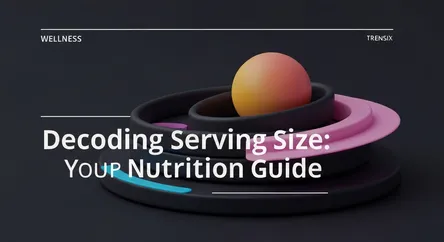Wellness
Decoding Serving Size: Your Nutrition Guide

Learn what serving size on a nutrition label means, why it's crucial for health, and how it impacts your dietary choices and portion control.
What is it?
A serving size is a standardized amount of a food or drink listed on the Nutrition Facts label. It is not a recommendation of how much to eat, but rather a reference for the nutritional information—calories, fat, sodium, etc.—provided. Serving sizes are presented in familiar measurements like cups, ounces, or pieces. It's important to distinguish serving size from portion size; a portion is the amount you actually choose to eat, which can be more or less than the listed serving size. For example, a small bag of chips might contain two servings, but if you eat the whole bag, your portion is double the serving size, and so is your intake of all listed nutrients.
Why is it trending?
Serving size information is gaining attention as people become more health-conscious and aware of the link between portion sizes and health issues like obesity. Regulatory bodies, like the U.S. Food and Drug Administration (FDA), have updated labeling laws to make serving sizes more realistic reflections of what people typically consume. For instance, the serving size for ice cream was increased from 1/2 cup to 2/3 cup to better match actual consumption habits. This trend is driven by the need for clearer nutritional information to help consumers make informed decisions and manage their intake of calories, sugar, and fat effectively.
How does it affect people?
Understanding serving sizes directly empowers people to manage their diet and health. By checking the "servings per container," individuals can accurately calculate their total calorie and nutrient intake. This knowledge is crucial for portion control and avoiding unintentional overeating. For individuals managing health conditions like diabetes or heart disease, paying attention to serving sizes helps in monitoring fat, sugar, and sodium intake. Ultimately, using serving size information helps people make more mindful food choices, compare products accurately, and maintain a healthier lifestyle by aligning their portions with their nutritional goals.